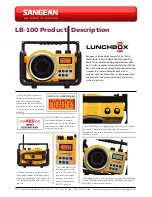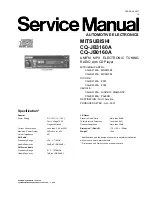
| 71
Radar presentation and video processing |
Argus Radar Operator Manual
radar echo smaller than 30 m with a speed of 20 knots, will move too fast and therefore will
not be visible.
The same echo having, for example, maximum dimension of 25 m will be correctly displayed
if the antenna rotates at 40 rpm (HSC), as the minimum dimension indicated in the table is
16 m.
The highlighted sections in the table indicates cases where the Scan to Scan correlation
should not be used, as it will require unrealistic ship sizes in order to be visible.
Scan to Scan correlation
V (KN)
20 rpm 2/3
40 rpm 2/3
20 rpm 3/4
40 rpm 3/4
10
16 m
8 m
30 m
16 m
20
30 m
16 m
60 m
30 m
40
60 m
30 m
120 m
60 m
70
120 m
60 m
240 m
120 m
Mutual radar interference
Interference from other radar must be expected when two, or more radar-equipped ships are
operating within the range of each other. The interference appears on the screen in the form
of spirals or dashed lines starting from the PPI origin. This interference is cut by means of a
digital interference suppresser circuit included in the video processor system.
Second trace echo
Second trace echoes are present only in condition of super-refraction. In these situations,
echoes placed at big distances may be displayed on the screen as second trace echoes. This
happens when the return echo is received one transmission cycle later, after the next radar
pulse has been transmitted. They can be recognised because of their irregular shape. A radar
set, with a pulse repetition rate of 800 CPS, presents second time around echoes whenever a
signal is received from a target at more than 97 NM. Due to the fact that the period between
two subsequent transmitted pulses is subject to small variations, the second trace echo ap-
pears undefined and hazy. These echoes will be displayed at their correct bearing but at a
wrong range given by their actual distance minus 97 NM.
Usually second trace echoes are automatically suppressed by the radar, when interference
rejection is different from OFF a PRF jitter is enabled and the second trace echo is shown at
different ranges from sweep to sweep. In this way the echo is not always present at the same
range so it is recognized as an interference and then suppressed by the IR process.
Sweep to Sweep correlation
Sweep to Sweep Correlation is a video process that prioritizes echoes appearing from scan
to scan. If an echo is only present in a single scan it will not be visible on the screen. Small
echoes surrounded by clutter may not be presented.
Target enhancement
Target Enhancement video processing is used to enhance the visibility of radar echoes. By
stretching them in azimuth and in range and increasing their brightness. The range stretching
is made only for the small echoes and not for the landmasses or rain blocks of video.
Target enhancement works after the anti-sea/rain processing, and with an additional sweep
to sweep control to filter the noise and sea/rain clutter residuals. This is made so that only the
smaller echoes are enhanced in dimension and brilliance. The size enhancement action is
more visible on lower range scales.
SART video presentation
The SART (Search And Rescue Transponder) is used for emergencies. The range for detection
of a SART is normally about 8 NM and its signal may be triggered by any X-Band radar. Its
purpose is to locate distressed vessels by displaying a series of echoes on the X-Band radar
display of a hypothetic rescue ship. Upon receiving a pulse from a standard 9 GHz X-band
Summary of Contents for ARGUS FMCW 3G
Page 1: ...ENGLISH ARGUSRADAR SYSTEM User Manual navico commercial com...
Page 2: ......
Page 149: ......
Page 150: ...988 10185 004...
















































